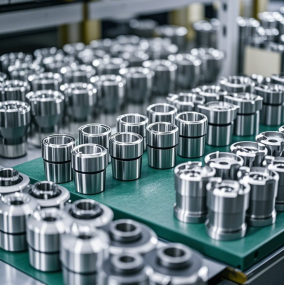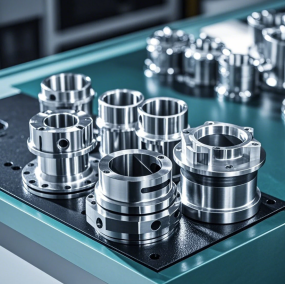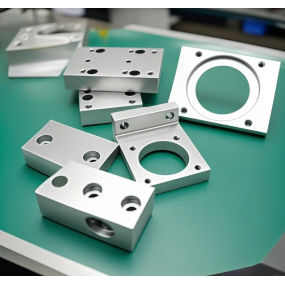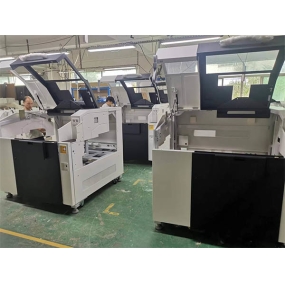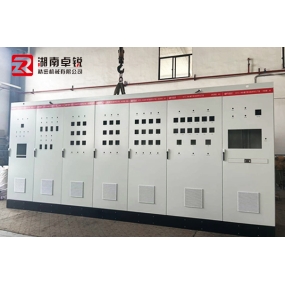
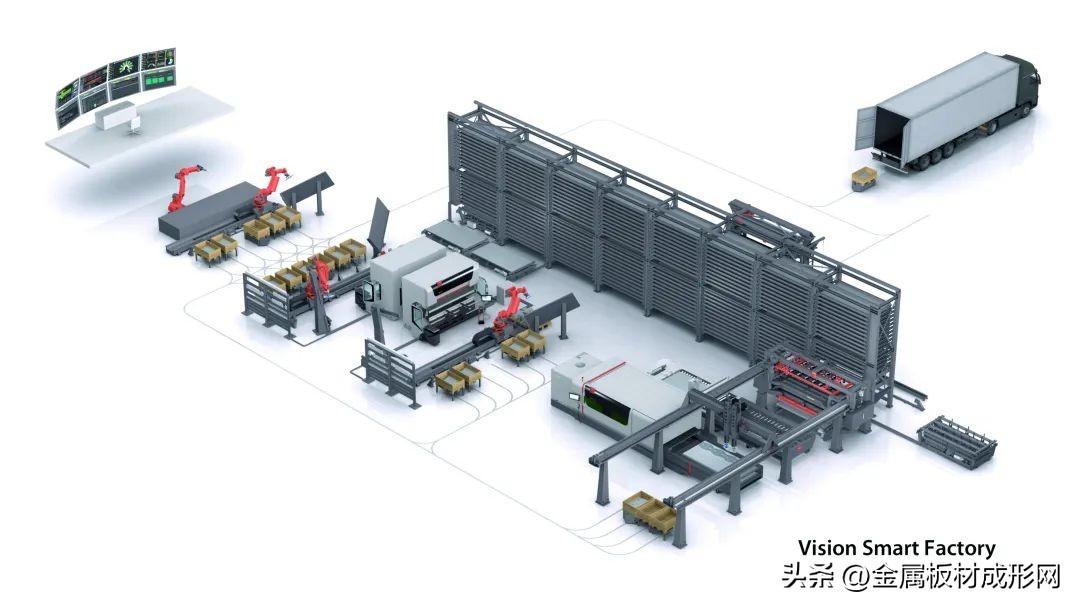
Chassis and cabinet Sheet Metal Processing is the process of forming metal plates into the desired shape using various manufacturing methods, including cutting, bending, welding to surface treatment, assembly, and many other steps. Usually, the process from chassis and cabinet sheet metal to metal products starts with drawing, and after the drawing is completed, various parts are made through the sheet metal manufacturing process.
laser cutting
Laser cutting is the preferred method for cutting chassis and cabinet boards. It is a very fast and precise cutting method that is not limited by molds. As shown in Figure 1.5mm, the board is cut flat, smooth, and free of burrs.
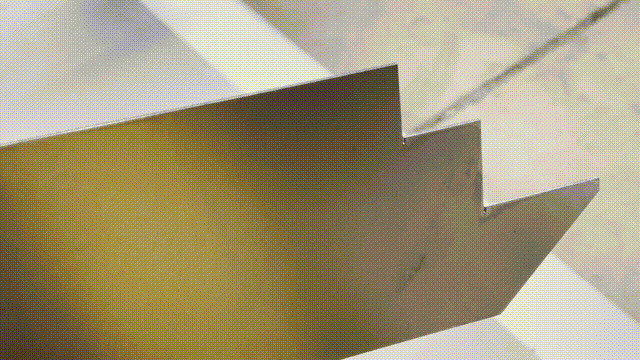
CNC turret punch press
Stamping is another method of cutting holes in the sheet metal industry, which uses a metal punch to impact the sheet metal and punch holes. It is suitable for large-scale production. When encountering regular shapes such as circular holes and multiple holes, CNC turret punching machines can quickly achieve them using mold stamping.
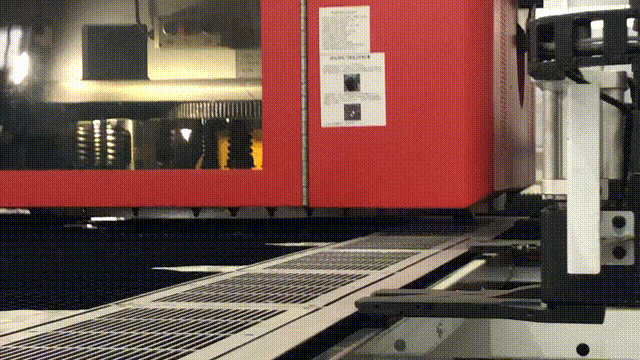
Bending
Due to the complexity of bending, this may be the most difficult step in metal manufacturing for chassis and cabinet sheet metal processing, and engineers must be very familiar with the bending properties of metals.
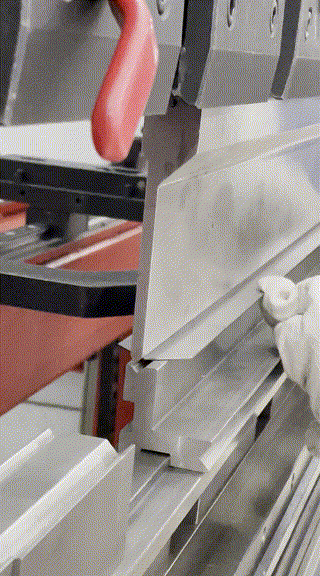
welding
The welding process is based on the production nature, drawings, and technical requirements of the product, combined with existing conditions, to weld the cut and bent sheet metal parts into a box.
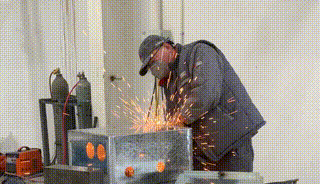
Spray coating (surface treatment)
The welded box body is transferred to the spraying workshop for powder coating after trial assembly. Powder coating is the process of applying electrostatic powder coating onto a workpiece. Under the action of static electricity, the powder is uniformly adsorbed onto the surface of the workpiece, and then baked at high temperatures to form the final coating.
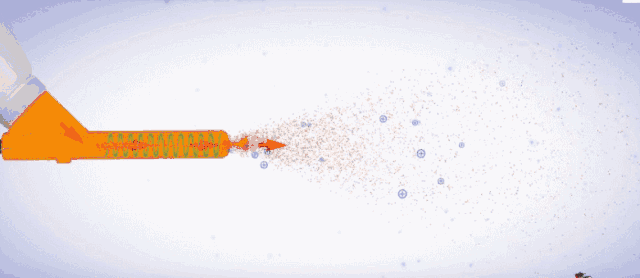
The surface of the product after spraying is dustproof and waterproof, and its adhesion, corrosion resistance, aging resistance, and other aspects are superior to the spray painting process, making it suitable for various harsh outdoor environments. When there are no special requirements, it is the preferred surface treatment method.
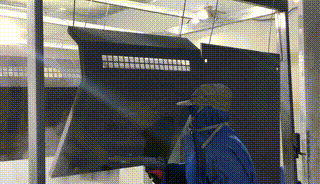
Some chassis and cabinets will be directly transferred to assembly for assembly after spraying, but there are also some that require printing logos or patterns and need to be transferred to the printing room for printing.
UV flatbed printers are a dark horse among industrial printers. Compared to traditional screen printing processes, their functions are very powerful: they do not require typesetting, can adapt to printing of different sizes, can be molded in one go, have beautiful and clear patterns, are sun resistant and waterproof, and most importantly, are environmentally friendly and odorless.
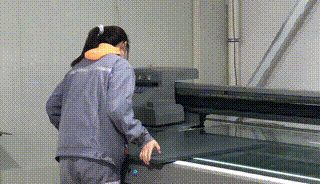
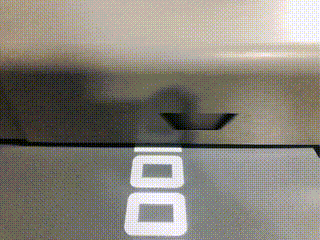
CNC glue dispensing
Compared with traditional manual adhesive strips, CNC glue dispensing has firm adhesion, smooth and beautiful surface, seamless one-time molding, strong adhesion, good elasticity, waterproof and dustproof.
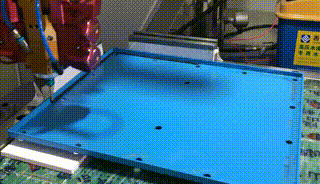
assembling
The final step in the production of the chassis cabinet is assembly. All the sheet metal parts are ready, just assemble them together.
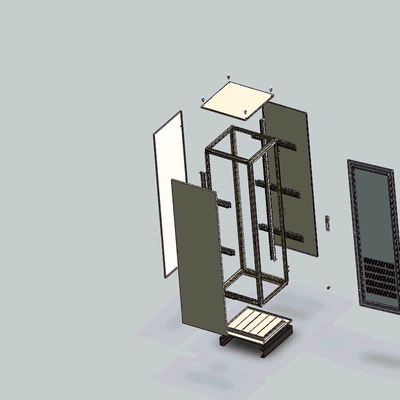


 Spanish
Spanish Arabic
Arabic French
French Portuguese
Portuguese Belarusian
Belarusian Japanese
Japanese Russian
Russian Malay
Malay Icelandic
Icelandic Bulgarian
Bulgarian Azerbaijani
Azerbaijani Estonian
Estonian Irish
Irish Polish
Polish Persian
Persian Boolean
Boolean Danish
Danish German
German Filipino
Filipino Finnish
Finnish Korean
Korean Dutch
Dutch Galician
Galician Catalan
Catalan Czech
Czech Croatian
Croatian Latin
Latin Latvian
Latvian Romanian
Romanian Maltese
Maltese Macedonian
Macedonian Norwegian
Norwegian Swedish
Swedish Serbian
Serbian Slovak
Slovak Slovenian
Slovenian Swahili
Swahili Thai
Thai Turkish
Turkish Welsh
Welsh Urdu
Urdu Ukrainian
Ukrainian Greek
Greek Hungarian
Hungarian Italian
Italian Yiddish
Yiddish Indonesian
Indonesian Vietnamese
Vietnamese Haitian Creole
Haitian Creole Spanish Basque
Spanish Basque

